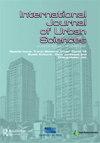Implementing the smart city: who has a say? Some insights from Hong Kong
IF 2.9
3区 工程技术
Q2 ENVIRONMENTAL STUDIES
引用次数: 9
Abstract
ABSTRACT Over the years, the concept of the ‘smart city’ has become increasingly popular, and planning institutions seem to be more than keen to incorporate buzzwords associated with the smart city into their strategic city-wide plans, like IoT (Internet of Things) or AI (artificial intelligence), to name a few. Beyond these buzzwords, however, it seems that researchers and policymakers have mainly focused on the policies and characteristics of a smart city with only limited consideration for whether the planning stages have involved its citizens, or whether its citizens are even in support of these measures. Particularly in East Asia, consultative approaches seem to provide only tokenistic opportunities at best for citizens to have a say about their vision of ‘smart’ futures. Hence, this paper presents an extensive analysis on the history of implementing strategic city-wide plans by planning institutions, elaborating on how the concept of the ‘smart city’ gradually expanded into popular usage, using the case of Hong Kong. Studying Hong Kong's urban planning strategies reveals the complexities of policy implementation in a city with an escalating sense of fear and mistrust between the people and the government, and where some of its citizens are wary of further integration with mainland China, charting the many incompatibilities of what it means to be ‘smart’ between the government and citizens. Whether the citizens’ needs are met are evaluated along a modified hierarchy of needs inspired by Maslow ([1954]. Motivation and Personality. New York, NY: Harper), and recommendations are provided that identify the many opportunities and challenges that lie ahead for cities of the future to truly become smart. Highlights Current smart city literature does not sufficiently consider citizens’ perspectives A modified hierarchy of needs is developed to evaluate the success of the smart city Smart components across four strategic planning stages in Hong Kong are analysed Hong Kong's recent strategic planning does not attain the higher hierarchy levels More public engagement is required to understand citizens’ hopes for the future实施智慧城市:谁说了算?一些来自香港的见解
摘要多年来,“智慧城市”的概念越来越流行,规划机构似乎更热衷于将与智慧城市相关的流行语纳入其城市战略规划,如物联网或人工智能。然而,除了这些流行语之外,研究人员和政策制定者似乎主要关注智能城市的政策和特征,而对规划阶段是否涉及其公民,或者其公民是否支持这些措施的考虑有限。特别是在东亚,协商方式似乎充其量只是为公民提供了一个象征性的机会,让他们对自己的“智能”未来有发言权。因此,本文以香港为例,对规划机构实施城市战略规划的历史进行了广泛的分析,阐述了“智慧城市”的概念是如何逐渐扩展到大众使用的。对香港城市规划战略的研究揭示了这座城市政策执行的复杂性,人们和政府之间的恐惧感和不信任感不断升级,一些市民对与中国大陆的进一步融合持谨慎态度,描绘了政府和市民之间“聪明”的许多不一致之处。受Maslow([1954]。动机与个性。纽约,NY:Harper)启发,根据修改后的需求层次来评估公民的需求是否得到满足,并提出建议,确定未来城市真正变得聪明的许多机会和挑战。亮点当前的智能城市文献没有充分考虑公民的观点。制定了修改后的需求层次,以评估香港四个战略规划阶段的智能组件的成功。分析香港最近的战略规划没有达到更高的层次。需要更多的公众参与来理解公民对未来的希望
本文章由计算机程序翻译,如有差异,请以英文原文为准。
求助全文
约1分钟内获得全文
求助全文

 求助内容:
求助内容: 应助结果提醒方式:
应助结果提醒方式:


